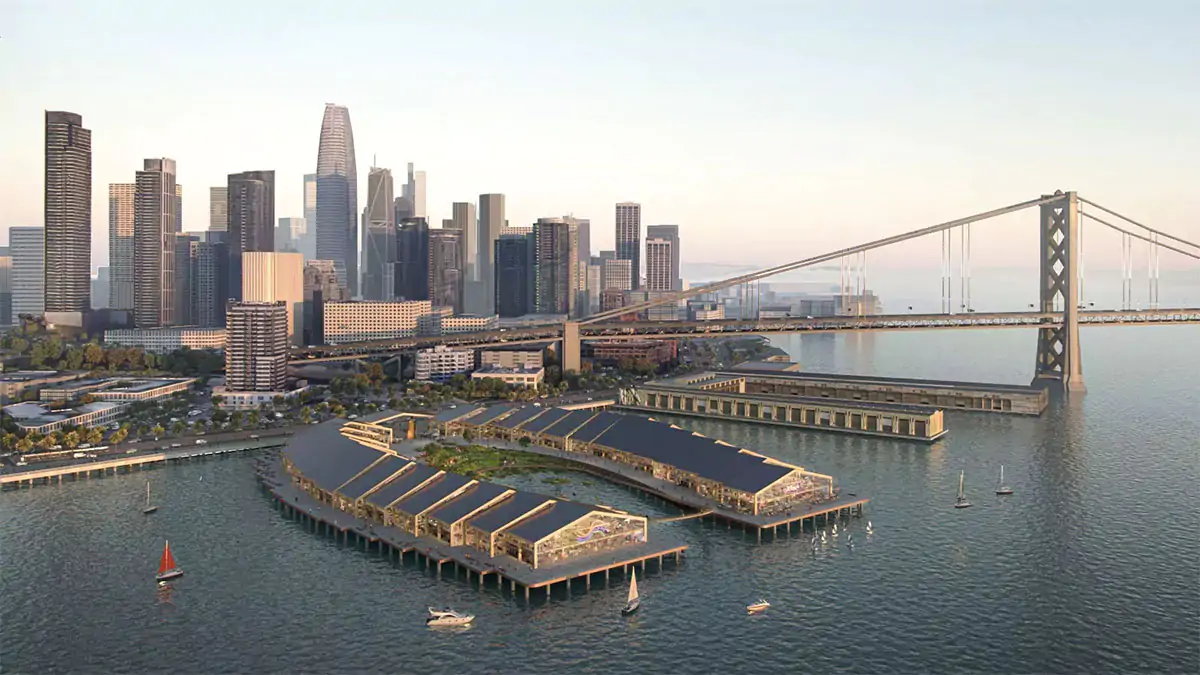The historic sheds that once occupied San Francisco Bay’s piers 30-32, next to the great Bay Bridge, burned to the ground in 1984, leaving bare the platform that supported them. The architectural project that has caught our attention this month consists of a proposal to replace the old platform. Named The Cove, it has been designed by Heatherwick Studio and will be built by Earthprise. As stated in the presentation documents, “The Cove is a new urban landscape that brings additional access and a vibrant ecological oasis to the bay with a variety of open space experiences”. For its design, the two firms have had the “creativity and best ideas” of a local, experienced and high level team of specialist dock-development consultants.
Every year, 24 million local visitors and tourists come to the Embarcadero coastline in San Francisco. This is the potential audience for the new proposed use of piers 30-32, which at present only serve as a car park. The project consists of a complex of two buildings with a central 2 hectare ecological public park. The main building complex is intended to be used for commercial and office purposes, whilst the rest of the complex is destined for leisure and recreational use.
Furthermore, the building has been designed to minimise its ecological footprint, both in construction and in its subsequent use. For the construction, the recycling of materials has been determined, as well as low-carbon construction elements, such as the wooden structure and alternatives to conventional concrete, such as glass pozzolans.

In contrast, with regard to its operation, superior glazing has been established to take advantage of sunlight, whilst a system of solar panels and batteries will generate up to 105% of the complex’s energy consumption. On the other hand, the equipment, all electric, will not require the use of fossil fuels. For the air conditioning, radiant floors are planned, as well as a heat-exchange system that uses the bay’s waters, and an orientation that allows the natural ventilation of the interiors. For the supply of 100% of the drinking water, a system has been designed for the collection, treatment and reuse of rainwater. Finally, the waste water will be treated and reused to supply 100% of the complex’s non-potable water demand.
The completion of the project, scheduled for 2026, will provide the city with a seaside promenade overlooking the bay, as well as an urban complex for commerce, work and public events. At the same time, it will integrate a central aquatic square for practicing water sports. Finally, it will provide a green space with a floating wetland that recovers native vegetation, both from the California cliffs and from the local terrain. The overall objective is to create a lasting and sustainable asset for future generations and to attract long-term investment.
Source and images: The Cove.






